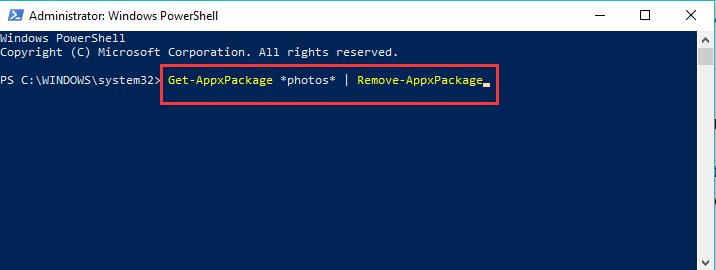

- How to uninstall powershell windows 10 how to#
- How to uninstall powershell windows 10 install#
- How to uninstall powershell windows 10 windows 10#
How to uninstall powershell windows 10 how to#
How to Uninstall Hyper-V on Windows Server 2016
How to uninstall powershell windows 10 windows 10#
Select “ Hyper-V disable” to boot Windows without Hyper-V or select “ Windows 10 Hyper-V” to boot Windows with Hyper-V. “ Hyper-V disable” is the name of the new boot entry in my case.īcdedit /copy description “Windows 10 Hyper-V” Run the following command to copy the default boot configuration to the new entry.One boot entry is used to boot an operating system with Hyper-V, and another one is used to boot an OS without Hyper-V. For more convenience, you can create two boot entries for your Windows machine.Note: If you need to enable Hyper-V again, run bcdedit /set hypervisorlaunchtype on Run the command prompt (CMD) as administrator and run the following command to disable Hyper-V by using bcdedit:.The idea of using this method is to disable Hyper-V in boot configuration. As you remember, Hyper-V is the first-type hypervisor that boots before Windows boots. If you use BCD to disable Hyper-V, the Hyper-V feature is disabled but not uninstalled completely from Windows. BCD store is used to describe boot parameters for applications, add boot menu entries, etc. Bcdedit is the command line tool to manage Boot Configuration Data or BCD. Hyper-V is not booted before Windows boots if you disable Hyper-V by using the command line bcdedit tool. In this case, Hyper-V is installed but inactivated. You can change Hyper-V startup options when Windows boots without uninstalling Hyper-V completely. The sequence to disable Secure Boot depends on your hardware vendor and differs for different motherboard vendors and models. You may need to disable Secure Boot in UEFI/BIOS settings of a computer to finish the uninstallation process and uninstall Hyper-V. Open PowerShell with administrative privileges, and run this command to disable Hyper-V:ĭISM /Online /Disable-Feature:Microsoft-Hyper-V You can type N (No) and restart Windows manually.ĭISM (Deployment Image Servicing and Management) is a tool for working with Windows images (.wim files) and install/uninstall Windows drivers, features, and packages.

How to uninstall powershell windows 10 install#
If Hyper-V is not installed, you can see in the Hyper-V requirements section the names of technologies required to install Hyper-V and the status of their availability on the machine.Run systeminfo to check whether Hyper-V is installed.Open the Windows Start menu, type cmd, right click the cmd entry, and click Run as administrator. Open the command line (CMD) as administrator.Check the Hyper-V installation status in the command line before you start to uninstall Hyper-V and after you uninstall Hyper-V to make sure that this hypervisor is removed from your Windows system. At the end of this workflow you get the same result as for the method explained in the previous section when using the graphical user interface (GUI). You can uninstall Hyper-V in the command line interface (CLI). How to Uninstall Hyper-V in the Command Prompt of Windows 10 Hit Restart now to restart your computer to finish the process and uninstall Hyper-V.

Hit OK to save settings and start the Hyper-V uninstallation process. Make sure that checkboxes in Hyper-V subfolders are deselected. In the Windows Features window that opens, deselect the Hyper-V checkbox.Click Turn Windows features on or off in the Control Panel window.In the Run field, type appwiz.cpl and press Enter. Press the Win+X combination on your keyboard, and, in the menu that opens, click Control Panel. There are two alternative methods to open Control Panel. Click Start, type Control Panel, and open Control Panel.Let me explain the workflow step by step. As a result, the Hyper-V feature is uninstalled completely. Using the Control Panel to uninstall Hyper-V is the most convenient method and is preferred by most Windows 10 users. DISCOVER SOLUTION How to Uninstall Hyper-V in Control Panel of Windows 10


 0 kommentar(er)
0 kommentar(er)
